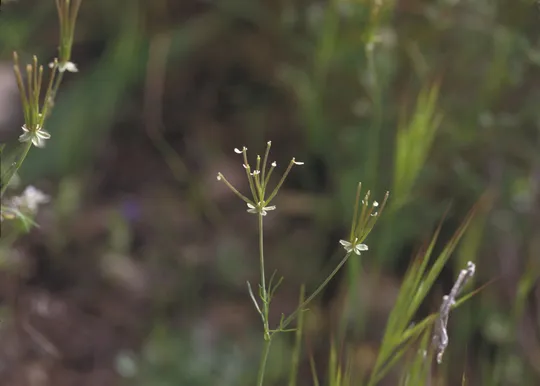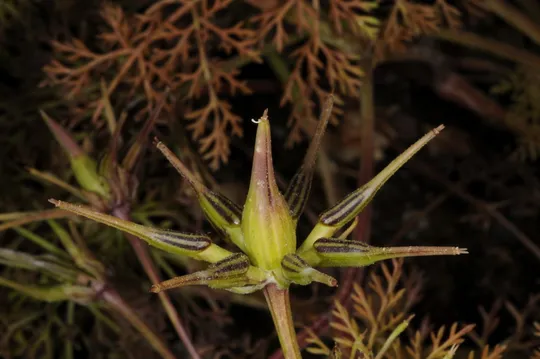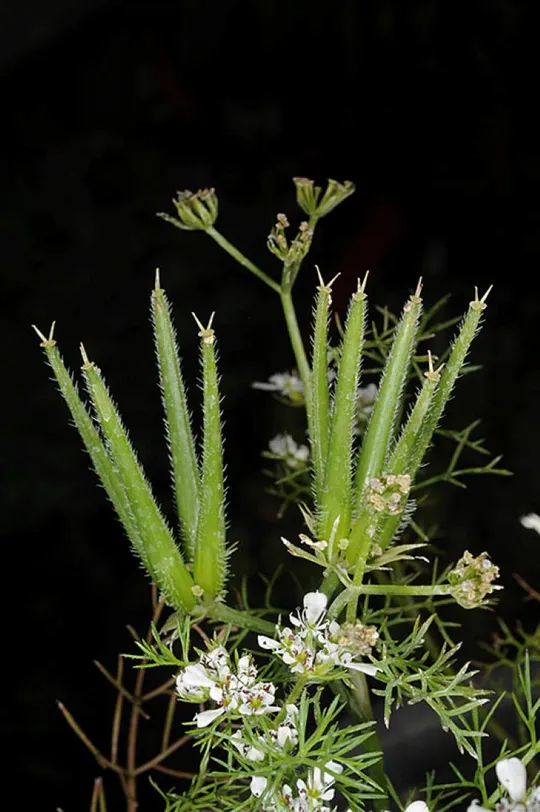Chervill, Stellate Shepard's Needle
Scandix stellata
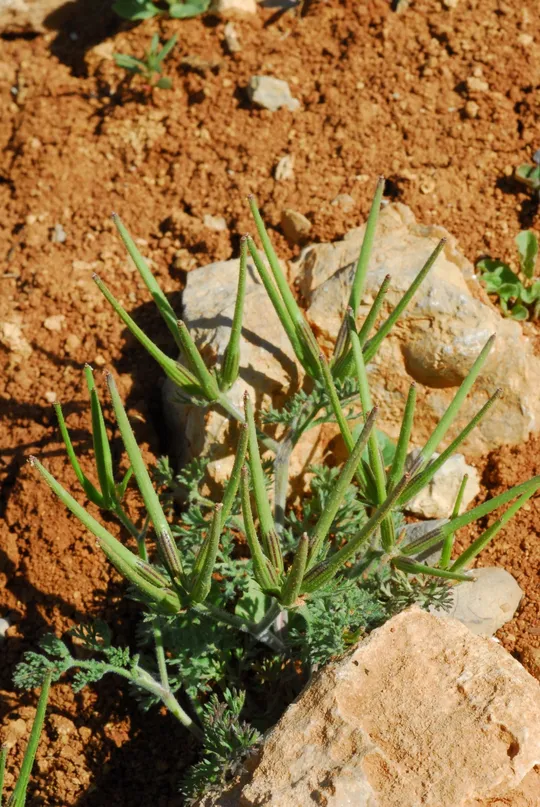
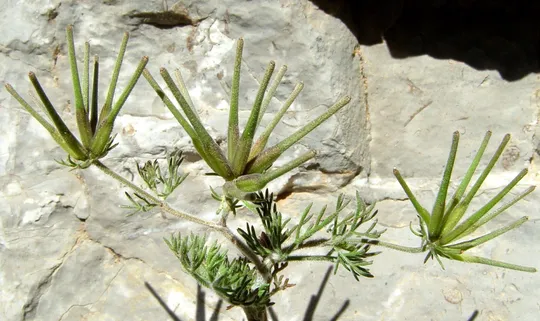
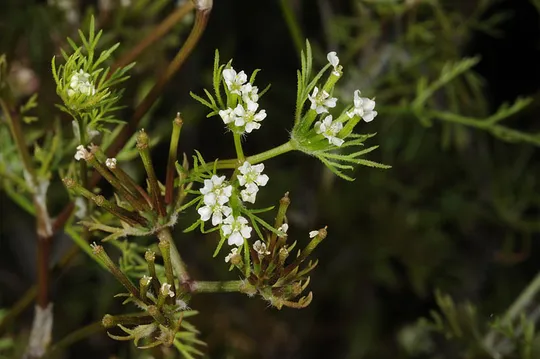
Scandix
stellata is found in Israel on a single site in the Negev
Highlands – the Lots
cisterns and was collected
there in the 1980s by Avinoam Danin and Aaron Liston. Is common in the high
Hermon in the montane transition forest zone at altitudes of 1400 meters and above
(scattered to rare at altitudes of 1000-1400 meters ) and also in the tragacanth vegetation at altitudes of 1800
meters and above.
Scandix
stellata grows on sunlit rocky or stony slopes in the Artemisia
sieberi plant association in the desert as well as in the deciduous montane
transition forest and in the tragacanth vegetation.
Scandix stellata is a polymorphic
species. The Flora Palaestina notes that several varieties have been described,
although intermediate forms were found between them and therefore they are not recognized
as distinct taxa (Zohary, 1972). It differs from other Scandix species
by its desert habitat and its divided bracts. In the past, it was described in
the genus Scandicium and as the species S. pinnatifida (Zohary,
1972).
The distribution pattern
of S. stellata in our region is distinctly fragmented: the Southern
Sinai populations, the site in the Negev Highlands and the large Hermon
populations are clearly disjunct. This suggests a relictual distribution from
Pleistocene periods that were cooler and rainier, at which time there was a
continuous geographic distribution from Mount Hermon to Southern Sinai.
For more on the genus
Scandix and additional Scandix species – see S. palaestina and S. australis.
In Israel Scandix stellata grows at a
single, isolated site, geographically cut off from the concentrations found on
Mount Hermon and in the Southern Sinai mountains. There is insufficient information
regarding its annual appearance and long-term population size trends. The site
is included in the Negev Highlands Reserve. It is not globally endangered. S. stellata is included in the Red Book of Cyprus
Flora (Tsintides et al 2007), where it is found at five sites at altitudes of
900-1600 m on the Troodos Mountains in the center of the island. It is threatened
at both sites due by road development.
Efforts should be
made once again to locate the Lots cisterns population, monitor it and examine
the appearance rates of new plants each year. A thorough survey of the high
places in the Negev Highlands Reserve should be conducted in a wet year to
locate additional populations.
Scandix stellata grows in the
Mediterranean Basin in Spain, Morocco, Southern France, the Balkans, the
Crimean Peninsula, the Middle Eastern mountains, Trans-Caspia (east of the
Caspian Sea) and east to Turkistan and Kyrgyzstan, in central Asia. In our
region, S. stellata is found in Syria,
Lebanon and Jordan. Large relictual populations are also known from the Southern
Sinai mountains.
S. stellata inhabits diverse habitats throughout
the world: Mediterranean shrubland, transition zone scrublands, tragacanth vegetation,
semi-desert and traditionally cultivated agricultural fields. In our region,
the species is limited to high altitudes; in Turkey it grows at altitudes of 300-2200
meters (Hedge and Lamond, 1972).
Scandix
stellata is an
extremely rare annual plant that grows at a single site in the high Negev
Highlands. Belongs to a group of species that are characteristic of the
biogeographic link between the Hermon, the Negev Highlands and the Southern
Sinai mountains, hence the significance of its conservation.
Hegde, I.C. and Lamond, J.M. 1972. Scandix in Flora of Turkey (ed. Ds, P.H. vol. 4. Pp. 329-330.
Current Occupancy Map
| 1000 squre meter pixel | 5000 squre meter pixel | 10000 squre meter pixel | |
|---|---|---|---|
| number of observations | 0 | 0 | 0 |
| in total pixels | 0 | 0 | 0 |
| Family | Apiaceae |
| Classification | On the endangered species list |
| Ecosystem | Desert Mountains |
| Chorotype | Irano - Turanian |
| Conservation Site | Lots cisterns |
| Rarity |
1
6
6
|
|---|---|
| Vulnerability |
0
0
4
|
| Attractiveness |
0
0
4
|
| Endemism |
0
0
4
|
| Red number |
1
3.2
10
|
| Peripherality | 0 |
| IUCN category | DD EW EX LC CR EN VU NT |
| Threat Definition according to the red book | Vulnerable |
 Based on:
Based on:
